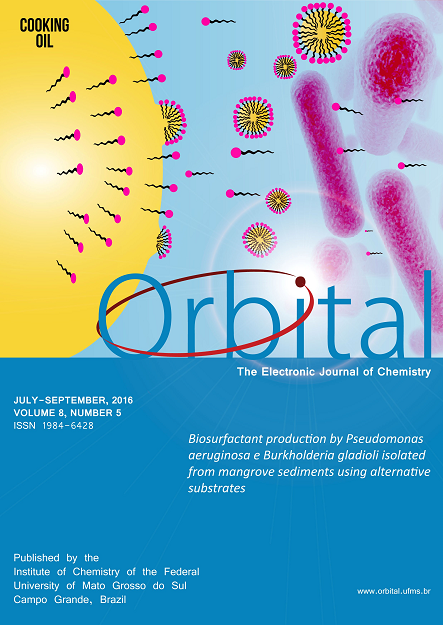Development and Validation Dissolution Analytical Method of Nimesulide beta-Cyclodextrin 400 mg Tablet
- analytical methodology,
- dissolution study,
- validation,
- nimesulide beta-cyclodextrin
Copyright (c) 2016 Orbital: The Electronic Journal of Chemistry

This work is licensed under a Creative Commons Attribution-NonCommercial-NoDerivatives 4.0 International License.
Abstract
The nimesulide (N-(4-nitro-2-phenoxyphenyl)methanesulfonamide) belongs to the class of non-steroidal anti-inflammatory drugs (NSAIDs and category II of the biopharmaceutical classification, The complexation of nimesulide with b-cyclodextrin is a pharmacological strategy to increase the solubility of the drug The objective of this study was to develop and validate an analytical methodology for dissolving the nimesulide beta-cyclodextrin 400 mg tablet and meets the guidelines of ANVISA for drug registration purposes. Once developed, the dissolution methodology was validated according to the RE of parameters no. 899/2003. In the development of the method it was noted that the duration of the dissolution test was 60 minutes, the volume and the most suitable dissolution medium was 900 mL of aqueous solution of sodium lauryl sulfate 1% (w/ v). It was also noted that rotation of 100 rpm and the paddle apparatus was the most appropriate to evaluate the dissolution of the drug. Spectrophotometric methodology was used to quantify the percentage of dissolved drug. The wavelength was 390 nm using the quantification. The validation of the methodology, system suitability parameters, specificity/selectivity, linearity, precision, accuracy and robustness were satisfactory and proved that the developed dissolution methodology was duly executed.

